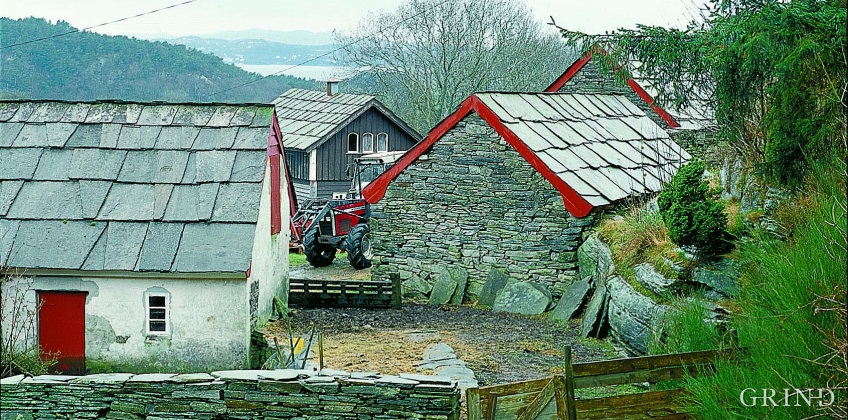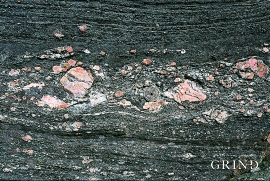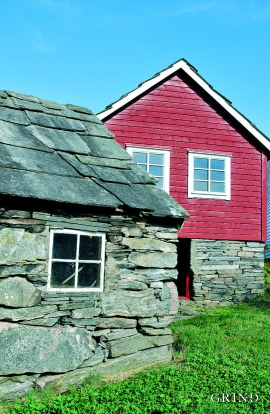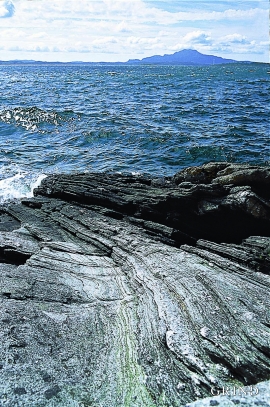Published: 17.06.2015 | Author: Haakon Fossen
Rock slabs from the stone quarry at Einstapevoll are used both in stone walls and for roofs. (Svein Nord)
This asserts parish priest Eric Olsen in 1797, in a small booklet on the slate rocks at Tittelsnes. He was a modernizer who promoted the use of slate as building material for outhouses and roof cover, partly to save the forest, which had become quite depleted in many areas.
On the road from Førde toward the tunnel to the triple junction, we see gneisses, granites and pegmatites, just as they have existed for about a billion years. If we continue toward Valevåg and Tittelsnes, the bedrock quickly becomes more foliated and layered. Here, along Bømlafjorden, the source rocks were compressed much later in Earth's history and then stretched out into thin layers or broken up into thousands of fragments, such that is was no longer possible to recognize them.
The resulting rocktype is called banded gneiss, or “augen gneiss”. The banded gneisses are an alternation between darker and lighter layers of different origin, while the augen gneiss contains centimetre-sized eye-shaped fragments of feldspar The fragments were once large feldspar crystals in pegmatites, but they were torn into small bits during the compression of the bedrock, over 400 million years ago.
These alterations occurred when the bedrock was a long way under the earth's surface and heated to around 400°C. At such temperatures, the feldspar is more resistant than other minerals which more readily get drawn out, almost like model wax.
The reason for this alteration of the bedrock was movement in the earth's crust both under the Caledonian mountain-building event and the development of the Hardangerfjord shear zone in Devonian time. The result is the gneisses that we find in the slate quarry at Einstapevoll and several other quarries in the Tittelsnes area. There would have been a better basis for slate quarrying at Sveio if the gneisses hadn't been folded at the end of their alteration history. The slate quarries must avoid these fold zones if they want to get fine, straight stones.
Burial finds indicate that there have been settlements here as far back as 600 years AD. In the 1800s the slate quarries were an important source of income for the owners of farms such as Einstapevoll, Haugsgjerd, Hauge and Gramshaug. Not least did the smallholders benefit from incomes in the quarries. The industry also provided income for a number of people from outside the area. In the 1920s work in the slate quarries came more or less to a halt. The slates have much in common with the slates from Solesnes in Jondal.
In the flattened bedrock along the south side of Bømlafjord, such as by Kjekse, one finds remnants of pegmatite veins in the augen gneiss. The feldspar crystals are most resistant against decomposition, and can be recognized as pink, eye-shaped grains about the size of a coin
- Fossen, H. 1993. Structural evolution of the Bergsdalen Nappes, Southwest Norway. Norges Geologiske Undersøkelse 1993, 424:23–50.









